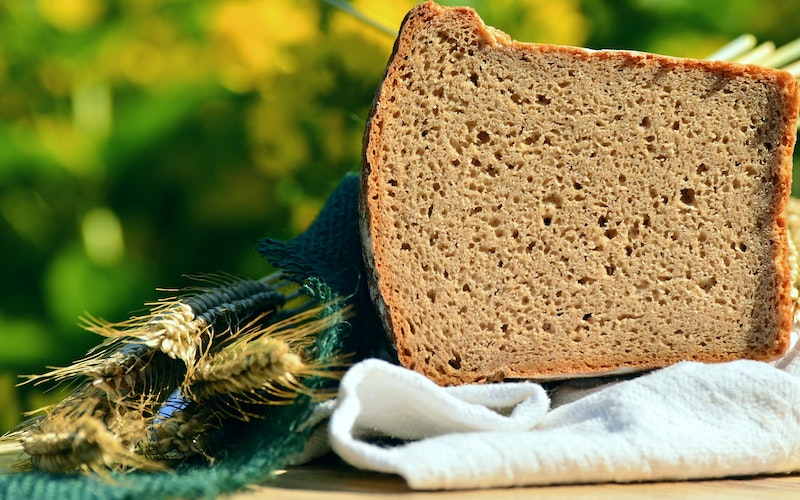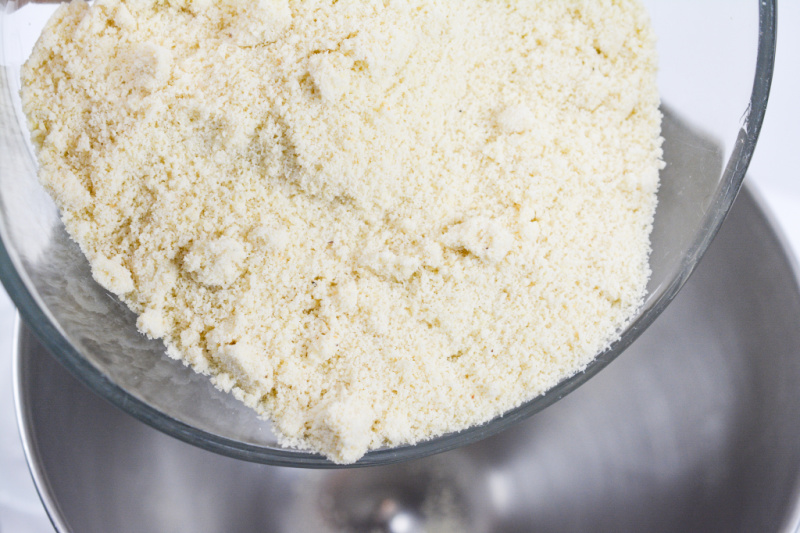Are you wondering about almond flour vs traditional flour? Learn more about what you need to know about baking with almond flour.
Posts may be sponsored. This post contains affiliate links, which means I will make a commission at no extra cost to you should you click through and make a purchase. As an Amazon Associate I earn from qualifying purchases.

Almond Flour vs. Traditional Flour: What You Need to Know
When it comes to baking, flour is the foundation of nearly every recipe. But with the growing interest in gluten-free and low-carb diets, many home bakers are exploring alternatives to traditional wheat flour.
Almond flour is one such option that has gained popularity for its unique flavor, nutritional benefits, and versatility in baking. But how does it compare to traditional flour? Let’s dive into the properties, benefits, and key differences between almond flour and traditional wheat flour, and when to use each in your baking.
Understanding the Basics
Before we explore the specific differences between almond flour and traditional wheat flour, it’s important to understand what each is made from and how they’re produced.
Almond Flour
Almond flour is made from blanched almonds that have been finely ground into a powder. Because it’s made from whole almonds, it retains much of the nut’s natural fat content. This gives it a moist texture and a slightly sweet, nutty flavor. It’s naturally gluten-free, low in carbohydrates, and high in protein and healthy fats.
Traditional Wheat Flour
Traditional flour, most commonly all-purpose flour, is made from wheat that has been processed and ground into a fine powder. It contains gluten, a protein that gives baked goods their structure and elasticity. Wheat flour is available in several varieties. This includes whole wheat, bread flour, and cake flour, each differing in protein content and texture.

Nutritional Comparison
One of the most significant differences between almond flour and traditional wheat flour lies in their nutritional profiles.
Almond Flour
– Calories: Almond flour is higher in calories than traditional flour due to its fat content, with about 160 calories per 1/4 cup.
– Carbohydrates: Almond flour is much lower in carbs, containing only 6 grams per 1/4 cup, making it ideal for low-carb and keto diets.
– Protein: Almond flour is a good source of protein, offering about 6 grams per 1/4 cup.
– Fat: High in healthy monounsaturated fats, almond flour contains about 14 grams of fat per 1/4 cup.
– Fiber: It is also high in fiber, with about 3 grams per serving, which aids in digestion and helps maintain blood sugar levels.
Traditional Wheat Flour
– Calories: Traditional flour is lower in fat, and thus lower in calories, with about 110 calories per 1/4 cup.
– Carbohydrates: Wheat flour is higher in carbs, with about 22 grams per 1/4 cup, making it less suitable for low-carb diets.
– Protein: Wheat flour contains less protein than almond flour, with about 3 grams per 1/4 cup.
– Fat: Wheat flour is very low in fat, with less than 1 gram per 1/4 cup.
– Fiber: Whole wheat flour is a good source of fiber, but refined white flour has significantly less, with about 1 gram of fiber per 1/4 cup.

Baking Properties
The different compositions of almond flour and traditional wheat flour lead to distinct baking properties that affect the texture, flavor, and structure of your baked goods.
Texture and Structure
– Almond Flour: Due to its lack of gluten, almond flour doesn’t provide the same structure as wheat flour. Baked goods made with almond flour tend to be denser and moister. This is great for certain recipes like muffins, brownies, and pancakes but may not work as well for items that require a light and airy texture, like bread or cakes.
– Traditional Flour: The gluten in wheat flour is what gives bread its chewy texture and cakes their fluffiness. When mixed with water and kneaded, gluten forms a stretchy network that traps air, allowing dough to rise and maintain its shape.
Flavor
– Almond Flour: Almond flour has a naturally sweet, nutty flavor that can enhance the taste of your baked goods. It’s particularly well-suited for desserts and pastries, adding a rich, buttery taste.
– Traditional Flour: Wheat flour has a neutral flavor that serves as a blank canvas for other ingredients. This makes it versatile for both sweet and savory recipes.
Moisture Absorption
– Almond Flour: Due to its higher fat content, almond flour doesn’t absorb liquid as readily as wheat flour. This can result in a more moist and sometimes oily texture in baked goods.
– Traditional Flour: Wheat flour absorbs moisture efficiently, which is crucial for creating doughs that are easy to work with and that bake up with a consistent texture.

When to Use Almond Flour vs. Traditional Flour
Choosing between almond flour and traditional wheat flour depends on the recipe you’re making, your dietary needs, and the texture you desire in the final product.
Use Almond Flour When:
– Gluten-Free Baking: If you’re baking for someone with celiac disease or gluten intolerance, almond flour is a safe, gluten-free option.
– Low-Carb Diets: For those following a keto or low-carb diet, almond flour is an excellent substitute to reduce carbohydrate intake.
– Adding Nutritional Value: Almond flour can boost the protein, healthy fats, and fiber content of your baked goods, making them more nutritious.
– Flavor Enhancement: If you want to add a rich, nutty flavor to your recipes, almond flour can make a big impact. This is especially true in cookies, muffins, and pancakes.
Use Traditional Flour When:
– Baking Bread or Pastries: The gluten in wheat flour is essential for creating the structure needed in bread, pastries, and other yeast-based recipes.
– Light and Fluffy Cakes: For recipes that require a light, airy texture, such as sponge cakes or angel food cakes, traditional flour is your best bet.
– Versatility: If you need a flour that can be used across a wide range of recipes, from sauces to baked goods, traditional flour is more versatile.
Conclusion
Both almond flour and traditional wheat flour have their unique benefits and uses in baking. Almond flour shines in gluten-free and low-carb recipes. It offers a rich flavor and additional nutritional benefits, while traditional flour remains the go-to for recipes that require structure and elasticity. By understanding the differences between these two types of flour, you can make informed choices that align with your dietary needs and baking goals. Whether you’re experimenting with new recipes or sticking to the classics, knowing when to use almond flour versus traditional flour will help you achieve delicious results every time.
Ellen is a busy mom of a 25-year-old son and 29-year-old daughter and a grandma to an adorable girl. She owns 6 blogs and is addicted to social media. She shares simple tips and recipes for baking with almond flour. If you’d like to work together, email [email protected] to chat.
